- Home
- About Us
- Meet Our Team
- Facilities
- Services
- Expertise
- Anterior Lamellar Transplants
- Artificial Cornea
- Cataract Surgery In Children
- Complex Cataract Surgeries
- Corneal Infections
- Corneal Transplants In Children
- Dry Eye Disorders
- Keratoconus
- Lasik And Refractive Surgery
- Ocular Allergies
- Ocular Inflammation
- Ocular Surface Reconstruction
- Pterygium Management
- Secondary Iol Implants
- Sutureless Corneal Transplants
- Patient Information
- Academics
- Darshan Activites
- Contact Us
SUTURELESS CORNEAL TRANSPLANTS
The cornea has a layered structure and is composed of the epithelium with its basement membrane on the top, and the endothelium with the Descemet’s membrane on the bottom. The rest of the corneal stroma – which is present between these 2 layers – constitutes 90% of the corneal thickness and is composed of sheets of collagen arranged in a precise manner.
The principal function of the cornea is to transmit visible light into the eye. By virtue of its regular curvature, it also assists in focusing the incoming rays of light, such that they reach the retina in a coordinated manner. Many diseases can affect these functions of the cornea.
In order to remain clear and transparent, the water content of the cornea is tightly regulated. Since fluid from the anterior chamber of the eye constantly enters the cornea, a “pump” to remove the excess fluid is necessary. This function is performed by the endothelial cells in the back of the cornea.
Conditions that damage the endothelial cells result in a loss of the “pump” function and fluid accumulation in the cornea, with resultant loss of vision and sometimes, symptoms of pain, redness and tearing. These conditions include trauma, genetic causes, surgical damage, severe intraocular inflammation, and prolonged increase in intraocular pressure.
Traditionally, such conditions are treated by a full-thickness corneal replacement procedure termed penetrating keratoplasty (PK). The use of sutures to hold the graft in position can result in shape alterations that reduce vision, predispose to infections and the wound is a zone of weakness that can rupture when subjected to trauma. With recent advances in surgical technique, only the posterior corneal layers are replaced in the affected eye. This “sutureless” approach to corneal replacement results in excellent results with greater wound strength and stability.
The new approach is termed DSEK (Descemet’s Stripping Endothelial Keratoplasty) and allows the surgeon to remove only the diseased posterior layer from the patient’s eye and substitute it with healthy endothelium and stroma from the donor eye. A further advance is DMEK (Descemet’s Membrane Endothelial Keratoplasty) in which only the Descemet’s membrane and endothelium are transplanted.!
Corneal edema
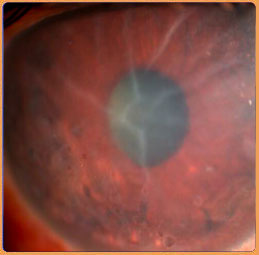
Sutured Transplant
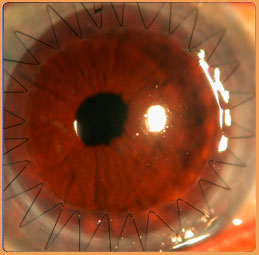
Sutureless Transplant
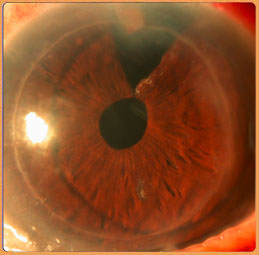
For failed corneal graft
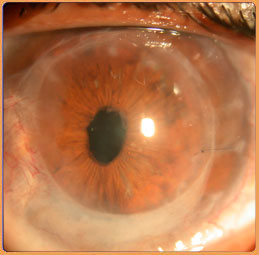
With Cataract Surgery
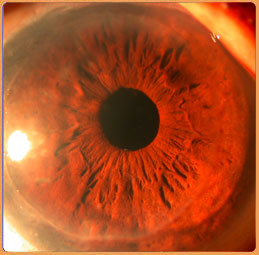
Comparison




